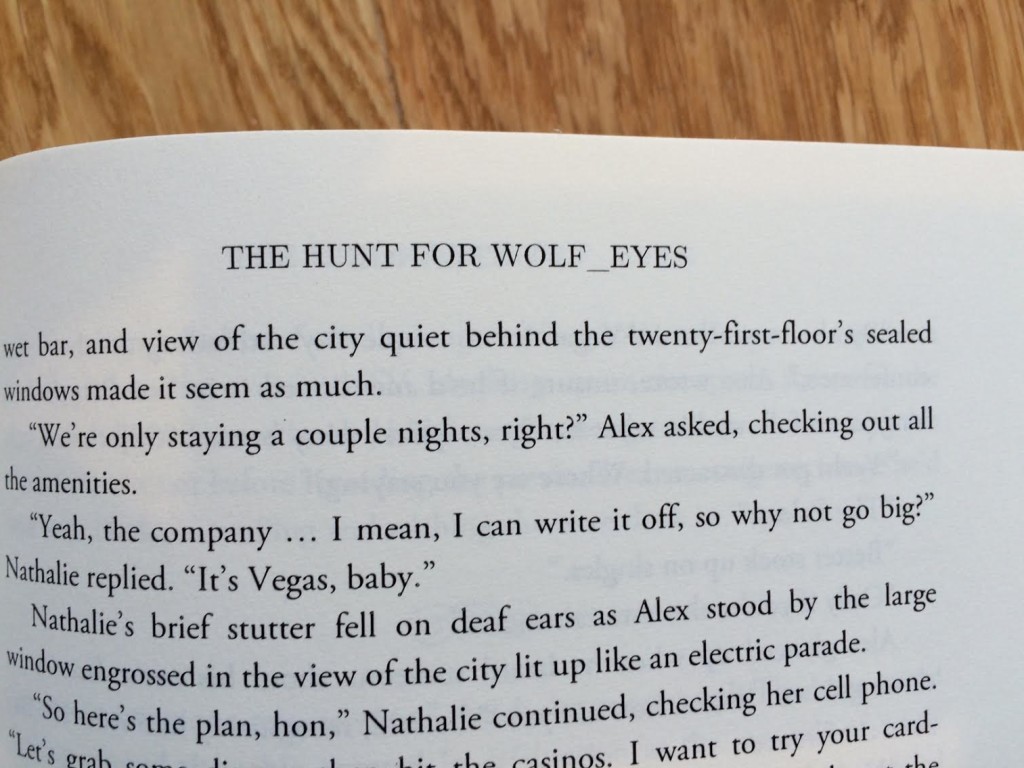How the interior pages of your book look are just as important as the cover design and editing. You need text that is comfortable and easy for your readers to read.
The little details that make up an easy-on-the-eye interior are so subtle you may not even notice them.

So here are some tips on how to get the details right.
When it comes to formatting the interior of your book, there are two options:
1. Format the interior yourself
This will save you money, but can be fiddly and time consuming. If you want to go down this route, and you’re using KDP to print your book, you can find templates here.
2. Pay an expert to do it for you
You will undoubtedly end up with a professional looking interior, but this option can work out to be expensive.
And actually, a third option:
3. Don’t offer your book in print, only as an ebook
Ebooks require a lot less formatting than print books. Plus, most e-reader devices let the reader customise their view by changing the size and typeface of the font. So there’s less worry about your interior not being comfortable to read.
But, if you decide to only offer an ebook version, you’ll be missing out on a large chunk of the market. You also won’t get a chance to get hold of a real copy of your book! Vanity aside, print copies are invaluable for marketing and promoting your book.
You also have the option to recoup some costs by only offering your ebook for sale first, and then once you are making some sales, produce a print version too.
So, back to the interior.
As readers, we are all used to the conventions of how a book should be laid out. You unconsciously expect to see a book looking a particular way. When it doesn’t, you know something isn’t right. That’s why a book without the polish we’re expecting to see will look amateurish. The devil is in the detail.
Here are the things to watch out for when formatting:
1) Chapter headings and running heads
The chapter headings are probably the biggest element of ‘design’ in your book’s interior. Here, you can add a bit of style, and some visual relief from the blocks of text that makes up the rest of the pages. You can even take your lead from the cover design by using the same or similar typefaces that your designer used.
Running heads are the notes at the top of each page which are there to help place the reader within the story.
You may not have even noticed them in books you’ve read, that’s how used to seeing them we are. But if you removed them, the page would certainly look a bit naked. I’ve seen quite a few self-published books where the running heads have been missed out. The interiors look ok, but the pages just look a bit incomplete.
When you flick through a book’s pages, the running heads orient you and somehow pull you into the book.
Here are a few options to help you configure your running heads:
- Title on left hand page, author name on right hand page
- Author name on left hand page, title on right hand page
- Title on left hand page, chapter heading on right hand page
- For non-fiction books – chapter title on left hand page, subsection on right hand page
And don’t forget the page numbers. These can go at the top with the running heads, or at the bottom of the pages.
Not only is the content of your headings a consideration, but also the way they look. The styling is very important in achieving a professional and polished look, but also to convey the feeling of your book.
You can have a play around with different typefaces. Try hand-written styles to soften a memoir or diary, or try a bold print for emphasis on a hard-hitting topic.
You can also add graphics or illustrations to your chapter headings, and carry through the theme when formatting your running heads. This is all giving extra information to your reader about the story.
2) How the content fits on the page
Other giveaways that your formatting wasn’t done professionally are the way the text fits on to the page.
Text size
Don’t make your text too large to increase the page count. This looks amateurish and will make readers doubt the credibility of your writing. It’s quality not quantity.
Margins
Don’t make the margins wider so that there is less text on the page. It’s uncomfortable to read. Make sure the margins also give room for your running heads and page numbers, and that they fulfil one of their key functions by allowing the book to be held open without the text being obscured.
But don’t make the margins too small to try to get more text on the page. Some self-publishing platforms base their charges on the number of pages in your book. Don’t try to make your book fit on less pages to reduce costs. Again, it’s a dead giveaway of amateurish antics.
Also consider what will happen to the pages when the book is bound. Part of the inner section of the page will be pulled in towards the binding. For this reason, it’s wise to leave more space on the inside margins (called the gutter margin) that will be beside the binding.
3) Pages
Page numbers
There is a convention for which side the odd and even numbers go:
Left hand page = even numbered pages
Right hand page = odd numbered pages
Don’t get them mixed up!
Missing pages
Don’t forget the ‘introductory pages’ for your book, like the copyright page and title page. These will ease your reader into your story, rather than just plunging them into the first page. These additional pages also give credibility as they’re what we expect to see in a book.
4) Fonts
The style of font you chose can have a big impact on the readability of the text, so chose wisely.
In general, sans serif fonts are best used for titles and headings, and serif fonts are better for the body text. What’s the difference?
Serifs are the ‘tails’ at the end of letters which make one letter flow into the next, like in natural handwriting.
Sans serif fonts are without these tails – ‘sans’ is the French for ‘without’.
Here are some examples:
Have a play around with different fonts, and try some dummy pages in each one you are considering. It’s hard to make a judgement based on a few words, so when you see a whole page of text in your chosen font, it may change your opinion.
In summary, pay close attention to getting the above details right, and you’ll have an interior that is readable, professional, and complies with everything that is expected of it by your reader. Remember, chapter headings and running heads, fonts, and how the text fits to the page will all make a big difference.
We’re Peter and Caroline O’Connor. Creating beautiful book cover designs for authors all over the world is our passion. Every author should be able to benefit from a beautiful book cover design (not just the lucky few who get signed by a big publisher). We design, podcast, and coach authors full-time so we understand your struggles. Currently accepting new clients.





